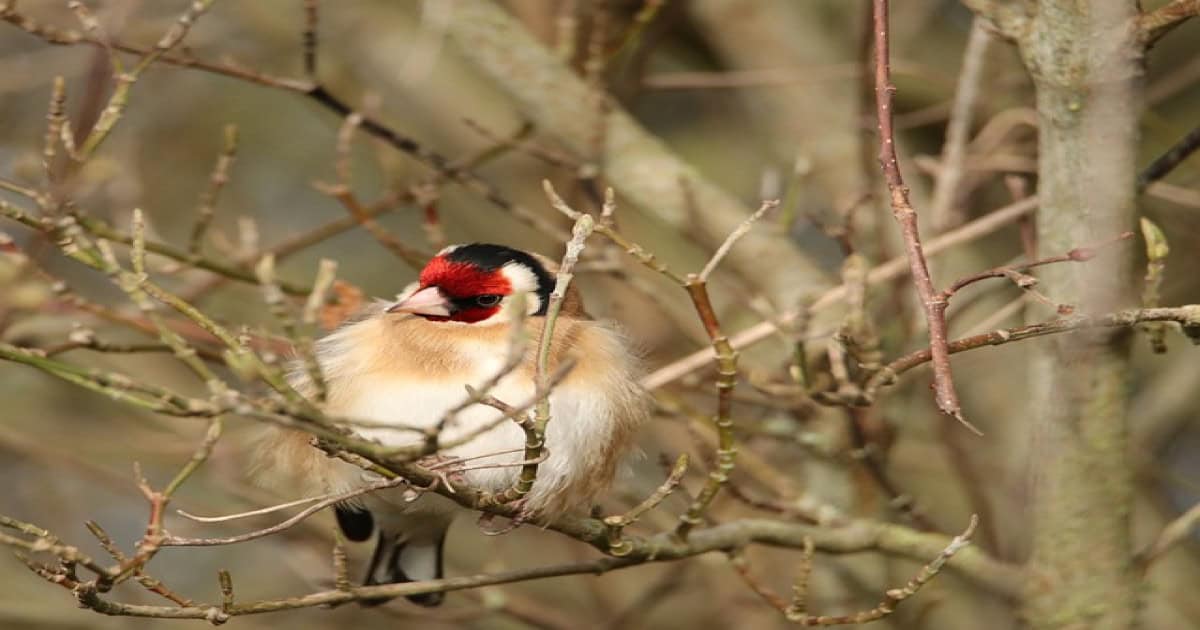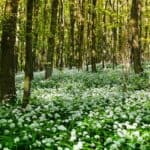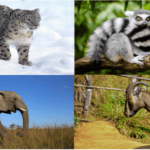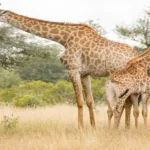In understanding the intricate balance of our natural world, it becomes clear that the Importance of Forests in Preserving Biodiversity is a pivotal aspect of environmental health.
The connection between forests and the preservation of diverse forms of life is a subject that deserves attention and comprehension. Simply put, the well-being of our planet is intricately tied to the health and vitality of its forests.
As we navigate the complexities of this relationship, we find that the survival and flourishing of various species are deeply intertwined with the existence and sustainability of forested ecosystems.
In this blog post, we aim to unravel the significance of forests in maintaining biodiversity, shedding light on how these green expanses serve as crucial sanctuaries for a rich tapestry of plant and animal life.
Forests: A Key Player in Biodiversity
Forests emerge as vital protagonists in the intricate tale of biodiversity, standing as key players in the preservation of Earth’s rich variety of life forms.
The Importance of Forests in Preserving Biodiversity is profound, as these lush expanses offer not only shelter but also sustenance to a myriad of plant and animal species.
In their sprawling canopies and beneath their thick undergrowth, diverse habitats and niches create a haven for countless organisms, fostering a harmonious ecosystem.
The dense, interconnected web of life within forests contributes significantly to the overall health of our planet, underscoring the indispensable role they play in maintaining a delicate balance that supports life’s flourishing.
Forests, in essence, are not just patches of greenery; they are dynamic ecosystems that orchestrate the symphony of biodiversity, ensuring the survival and coexistence of a multitude of species.
What is Biodiversity?
Biodiversity, in simple terms, refers to the incredible variety of life on Earth. It encompasses the diverse array of plant and animal species, their genetic differences, and the ecosystems they form.
Forest importance in preserving biodiversity is rooted in the understanding that these ecosystems are crucial for sustaining this rich variety of life. Biodiversity ensures the resilience and adaptability of our planet’s ecosystems, allowing them to withstand changes and disturbances.
In essence, it is the tapestry of life that makes Earth a vibrant and thriving home for countless species.
Recognizing and preserving biodiversity is not just an environmental endeavor; it is an acknowledgment of the interconnectedness of all living things and the role each species plays in maintaining the health and balance of our shared ecosystem.
Why are Forests Important for Biodiversity?

Forests play a special and crucial role in preserving biodiversity. Think of forests as nature’s bustling neighborhoods, where a diverse community of plants and animals coexists.
The unique structure of forests, with their towering trees, shrubs, and the layers of vegetation, creates different living spaces, or habitats, for various creatures. These habitats cater to the needs of countless species, offering food, shelter, and safe spaces for reproduction.
In this way, forests act as life-support systems for a wide range of plants, insects, birds, and mammals. The dense canopy of trees not only provides shade but also regulates temperature and moisture, creating optimal conditions for different organisms to thrive.
So, when we talk about the forest importance for biodiversity, we’re highlighting how these green havens serve as guardians, ensuring the survival and well-being of numerous species in our interconnected web of life.
The Importance of Forests in Preserving Biodiversity
Forests play a crucial role in preserving biodiversity by providing a safe and nurturing home for a wide variety of plants and animals.
The structure of a forest, with its tall trees, shrubs, and diverse vegetation, creates different homes for different creatures. These habitats offer the right conditions for various species to live, eat, and raise their families.
For instance, the tall trees provide perches and nesting spots for birds, while the forest floor becomes a bustling ground for insects and small mammals. This variety in living spaces is like a buffet for biodiversity, ensuring that many species can find what they need to survive.
Additionally, forests act like giant sponges, absorbing and holding water, regulating the climate, and creating stable environments for countless organisms.
So, when we talk about forests and biodiversity we’re highlighting how these green landscapes are essential safe havens, contributing significantly to the rich tapestry of life on Earth.
Also Read: Plant Biodiversity Importance and Conservation
Habitat and Niche Diversity in Forests
Within forests, there’s a wonderful variety of places for different creatures to live, and we call these spots “habitats” and “niches.” Picture a forest like a big apartment building with different floors and rooms.
Each level and room provides a unique living space, catering to the needs of various animals and plants. Some creatures might prefer the high branches of tall trees, while others feel at home in the cozy underbrush or on the forest floor.
These distinct living spaces are what we mean by habitats, and they contribute to Habitat and Niche Diversity in Forests. Just like how people have different jobs and roles in a community, different species have specific roles or niches in the forest.
Some animals are great at breaking down dead leaves, while others are expert seed dispersers. By having diverse habitats and niches, forests create a welcoming environment for a wide array of species, fostering a rich and balanced community of life.
Species Richness and Forest Ecosystem

The health of a forest, like how we gauge the well-being of a community, is closely linked to something called “species richness.”
Species richness simply means the number of different kinds of plants, animals, and other living things in a particular area, like a forest. Imagine a forest as a big family with lots of different members – birds, insects, trees, and more.
Now, the more diverse and varied this family is, the better it is for the overall health of the forest. This is because each species contributes something unique, like a piece of a puzzle. Some plants might be excellent at providing food, while certain animals could help control insect populations.
When you have many different species working together, the forest becomes more resilient, like a strong team where everyone has a role.
So, when we talk about Species Richness and Forest Ecosystems, we’re essentially highlighting how a diverse mix of living things makes a forest healthier and better equipped to handle challenges.
Keystone Species and Forest Biodiversity
In a forest, there are certain species that play an extra important role, and we call them “keystone species.” Imagine a keystone as the center stone at the top of an arch – it holds everything together.
Similarly, keystone species have a critical job in keeping the forest balanced and diverse. These special species might not be the most numerous, but their presence is crucial for the well-being of the entire ecosystem.
For instance, a keystone species could be a particular kind of tree, like the mighty oak, that provides homes for many animals, including birds and squirrels.
If you take out a keystone species, it’s like removing a key player from a game – things start to get out of balance.
So, when we talk about Keystone Species and Forest Biodiversity, we’re shining a light on these essential contributors, like the oak tree, that help maintain harmony and variety in the forest community.
Biodiversity in Forests: A Closer Look
Taking a closer look at Biodiversity in Forests allows us to explore the various living things that call the forest home. It’s like opening a book and discovering the many characters that make the story of the forest complete.
Within forest ecosystems, three main dimensions of biodiversity stand out – plants, animals, and microorganisms.
Plant Diversity in Forests
Diving into Plant Diversity in Forests uncovers a vibrant world filled with different types of plants, each playing a crucial role in the forest community.
Picture a forest like a colorful garden with tall trees, bushes, flowers, and ferns – it’s a lively mix of greenery. These various plants create a diverse tapestry, offering different shapes, sizes, and colors.
Some plants, like towering trees, provide shade and shelter for animals, while smaller plants on the forest floor contribute to the intricate balance by preventing soil erosion.
The different types of plants also serve as homes and food sources for various creatures.
So, when we talk about Plant Diversity in Forests, we’re essentially exploring the rich and varied plant life that forms the backbone of the forest, contributing significantly to the overall biodiversity of the ecosystem.
Animal Biodiversity in Forests
Exploring Animal Diversity in Forests is like embarking on a journey through a bustling community where different creatures share their homes. In the forest, you’ll find a variety of animals, each with its own unique characteristics and role to play.
From small insects buzzing around to larger mammals like deer and bears, the diversity of animals in forests is truly remarkable.
Birds add melodies to the forest with their songs, while reptiles and amphibians quietly navigate through the underbrush.
The abundance of insects, such as butterflies and beetles, contributes to the intricate web of life.
Every species, big or small, contributes to the balance and health of the forest ecosystem.
So, when we talk about Animal Diversity in Forests, we’re peeking into the lively and diverse world of creatures that call the forest their home, highlighting the richness of life that thrives in these green landscapes.
Microbial Diversity in Forests
Let’s shine a spotlight on the often-overlooked heroes of the forest – microorganisms.
In Microbial Diversity in Forests, we uncover the tiny living beings that play a vital role in keeping the forest healthy. Microbes, which include bacteria, fungi, and other microscopic organisms, might be small, but their impact is enormous.
They work behind the scenes, breaking down dead leaves and wood, returning nutrients to the soil that plants need to grow.
Some microbes, like mycorrhizal fungi, form partnerships with plant roots, helping them absorb essential nutrients such as phosphorus. It’s like a hidden teamwork that supports the entire forest community.
So, when we talk about Microbial Diversity in Forests, we’re acknowledging these microscopic champions and their essential contributions to the well-being of the forest ecosystem, showcasing that even the tiniest members play a crucial part in the intricate balance of life.
Conclusion
In wrapping up our exploration, it’s clear that forests are the lifeblood of biodiversity. From the towering trees to the tiniest microbes, each member contributes to the harmony of the forest ecosystem.
Plant Diversity forms the green foundation, animals add movement and variety, and Microbial Diversity quietly supports nutrient cycles. Recognizing the Keystone Species, often unsung heroes, ensures the delicate balance remains intact.
The Importance of Forests in Preserving Biodiversity is undeniable, sustaining life on Earth. As we marvel at the wonders within forests, a crucial call to action emerges – let’s conserve these green sanctuaries.
By safeguarding forests, we protect the intricate tapestry of life and secure a healthier planet for generations to come. It’s time for each of us to be stewards of nature, preserving the vital connection between forests and biodiversity.






